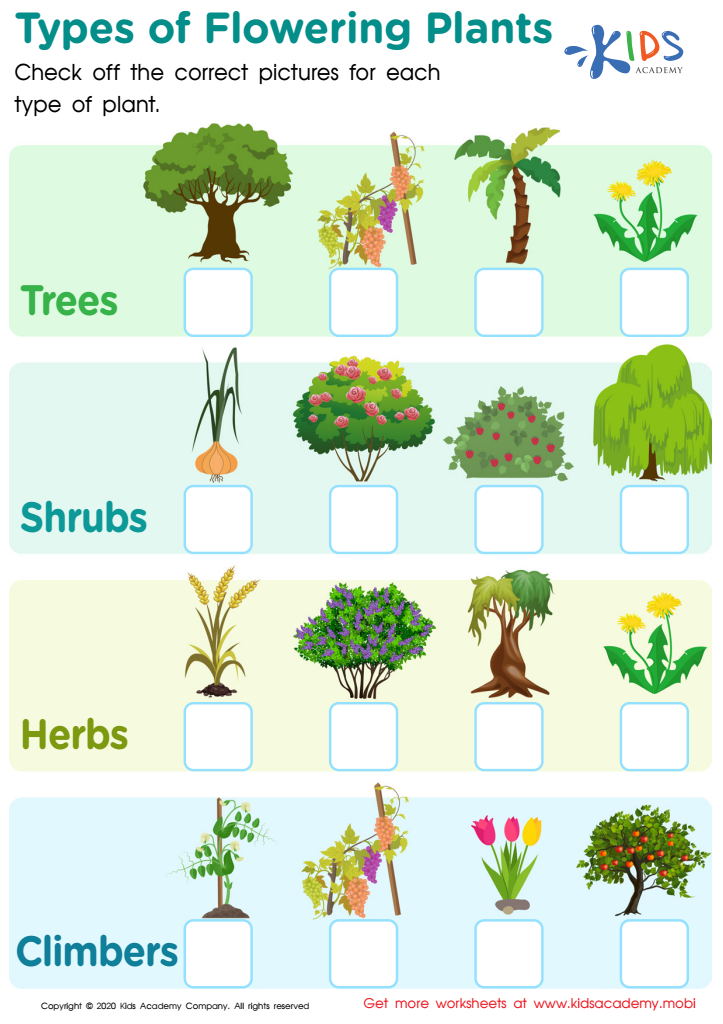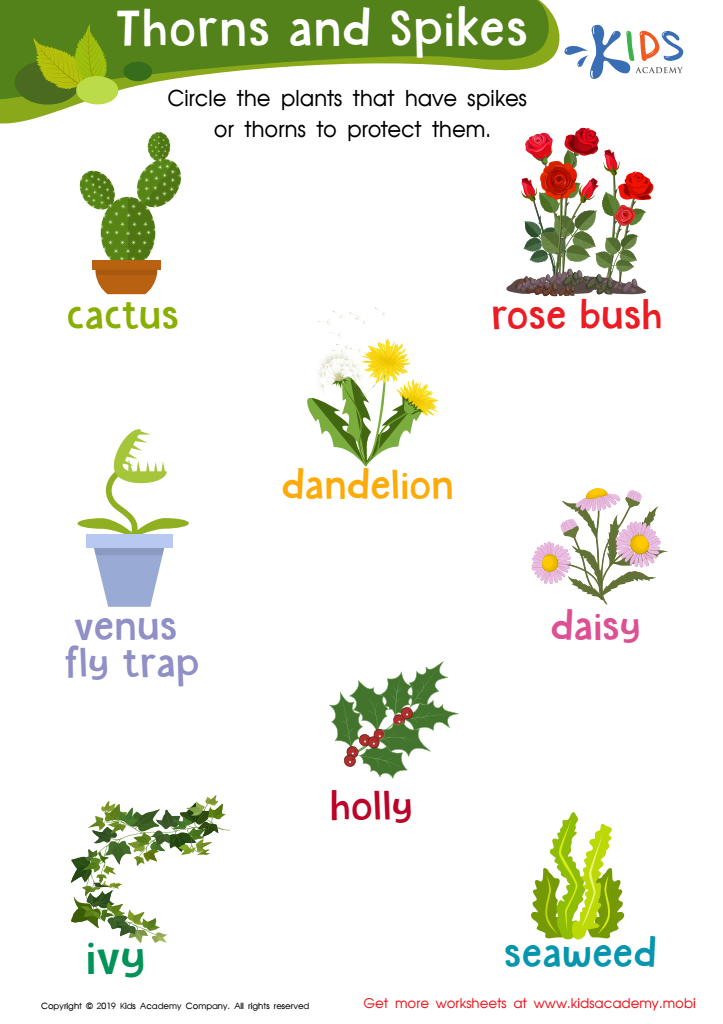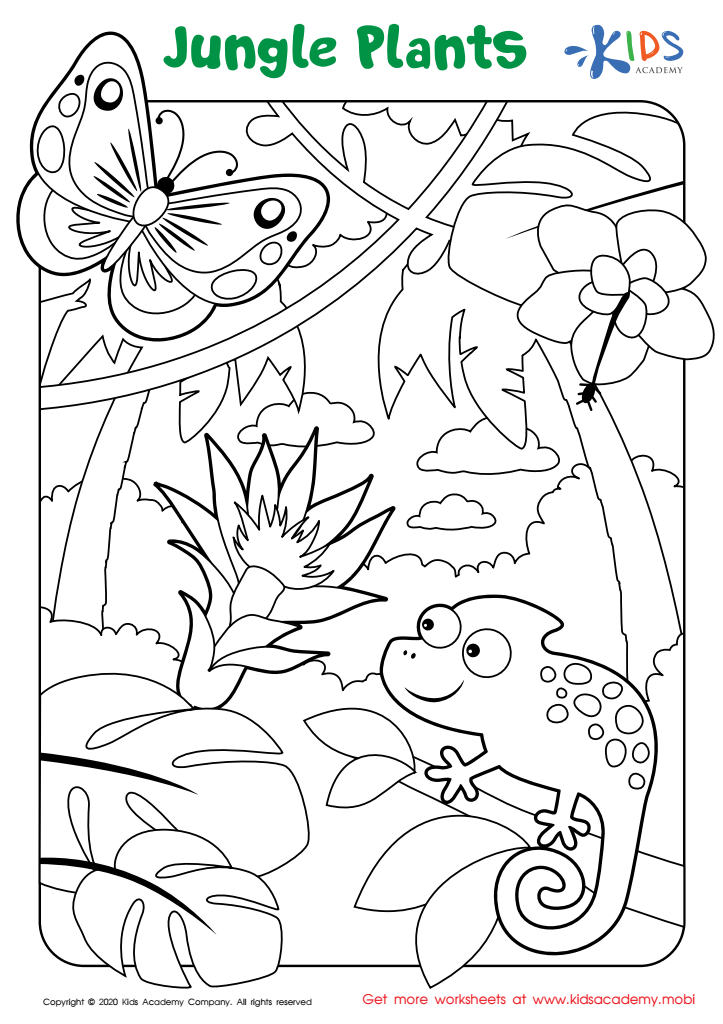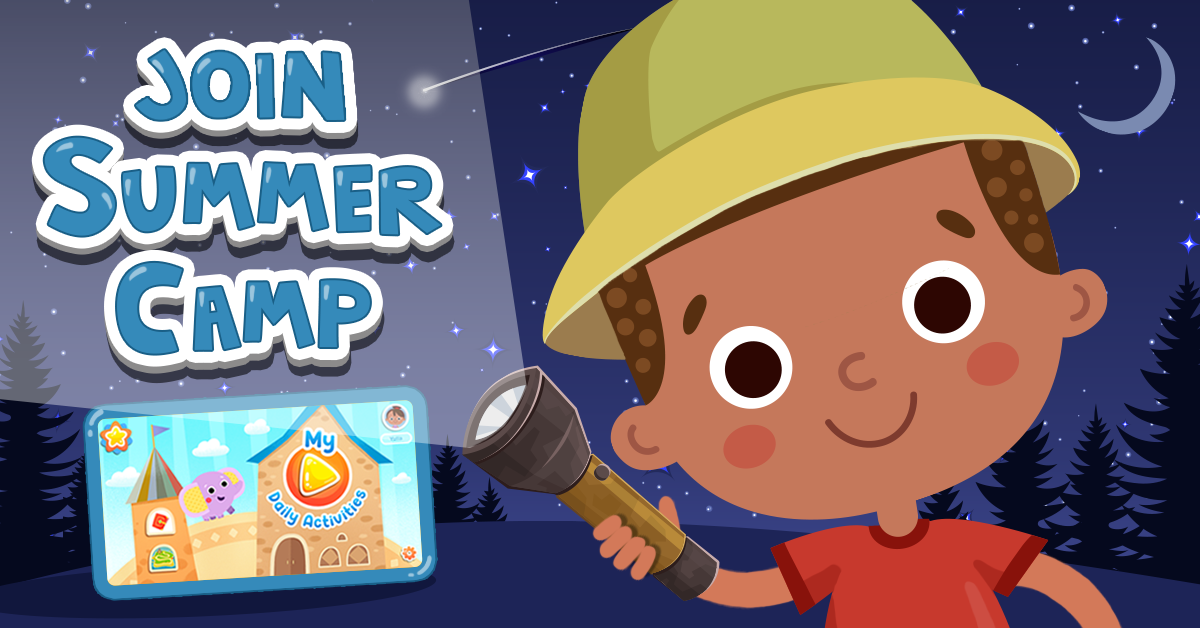Plant identification Plants Worksheets for Ages 3-8
5 filtered results
-
From - To
Discover our engaging Plant Identification Worksheets designed for children ages 3-8! These worksheets offer a fun, interactive way for young learners to explore the world of plants. Featuring vibrant illustrations and age-appropriate activities, kids will learn to recognize different types of plants, their parts, and their importance in nature. With a variety of exercises that promote critical thinking and observation skills, our worksheets make science enjoyable and accessible for early learners. Perfect for classroom settings or home study, these resources encourage curiosity about the botanical world, fostering a love for nature from an early age. Explore today and ignite their passion for learning!


Types of Flowering Plants Worksheet


Plant Fun Worksheet


Thorns and Spikes Worksheet


What Do Plants Need to Grow Worksheet


Jungle Plants Worksheet
Plant identification is an essential skill that can significantly benefit children aged 3-8. Engaging in plant identification fosters an early connection with nature, which is crucial for holistic development. Explore opportunities in your surroundings and assist children in discovering local flora, promoting curiosity, and observational skills. Understanding plants encourages a sense of wonder about the world around them.
Moreover, plant identification cultivates an appreciation for biodiversity, teaching children about the environment and the importance of plants in ecosystems. Ecological awareness at an early age lays the foundation for environmentally conscious behaviors in the future. These exploratory activities build language skills as children learn terms like "leaf," "stem," and "roots," linking them to scientific concepts.
Hands-on learning encourages cognitive development, enhancing critical thinking as children categorize and compare different plants. Overall, exploring plant identification creates a rich, engaging ground for experiential learning, sensory exploration, and social interaction as children work together to identify and care for plants. By introducing this skill early, parents and teachers promote not only a love of nature but also essential life skills that will serve children for years to come, nurturing the next generation of environmental stewards.
 Assign to My Students
Assign to My Students





















